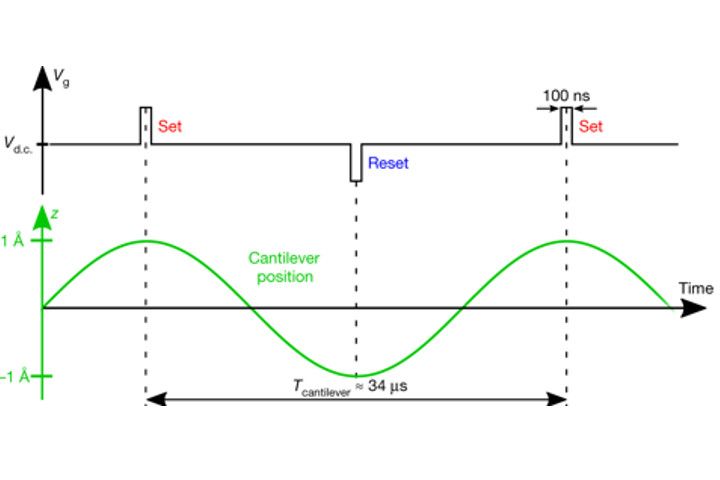
Nature
Electron transfer plays a crucial part in many chemical reactions, including photosynthesis, combustion and corrosion. But even though redox-state transitions change the electronic structure of the molecules involved, mapping these changes at the single-molecule level is challenging. Scanning tunnelling microscopy provides insights into the orbital structure of single molecules and their interactions, but requires the use of a conductive substrate that keeps molecules in a given charge state and thereby suppresses redox-state transitions. Atomic force microscopy can be used on insulating substrates to obtain structural and electrostatic information but does not generally access electronic states. Here we show that when synchronizing voltage pulses that steer electron tunnelling between a conductive atomic force microscope tip and a substrate with the oscillation of the tip, we can perform tunnelling experiments on non-conductive substrates and thereby map the orbital structure of isolated molecules as a function of their redox state. This allows us to resolve previously inaccessible electronic transitions in space and energy and to visualize the effects of electron transfer and polaron formation on individual molecular orbitals. We anticipate that our approach will prove useful for the investigation of complex redox reactions and charging-related phenomena with sub-ångström resolution.
https://www.nature.com/articles/s41586-019-0910-3
https://www.uni-regensburg.de/pressearchiv/pressemitteilung/954882.html
SFB 1277
Doris Meier
Universität Regensburg
Phone: +49 (0) 941-943 2264
Email: SFB1277.Office@ur.de